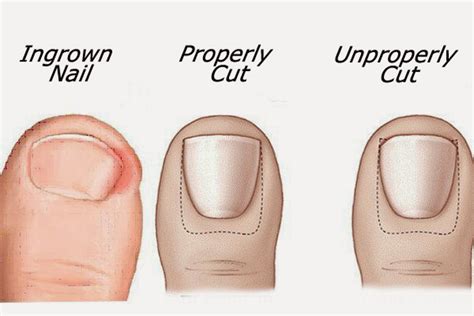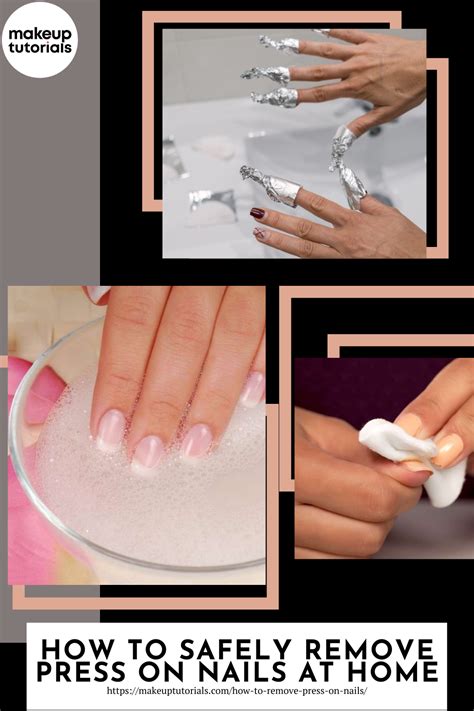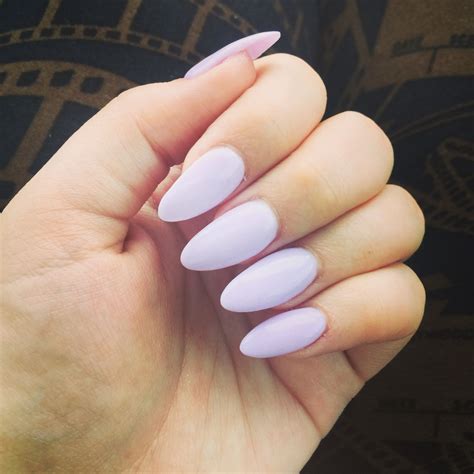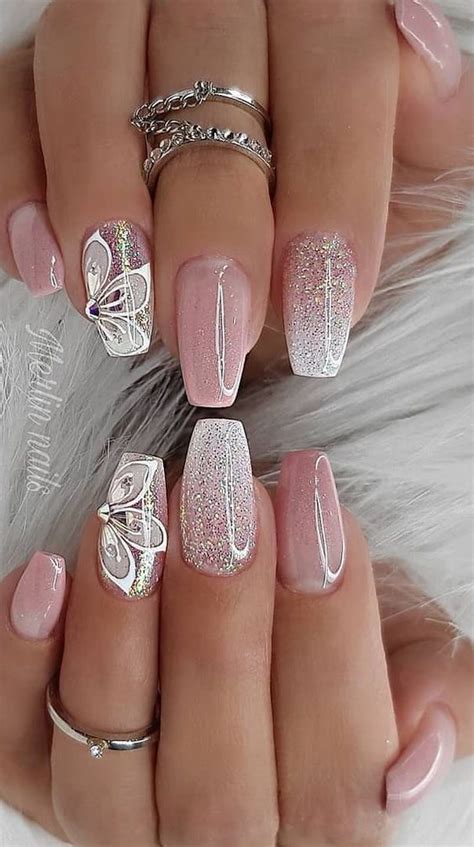Learn the importance of proper nail trimming and tips for safely preventing and treating ingrown nails at home. When to seek professional help.
Understanding Ingrown Nails
Contents
Ingrown nails occur when the corner or the edge of a nail grows into the skin instead of over it. This can cause pain, swelling, redness, and even infection if not properly treated. It is a common condition that can affect anyone, but is most common in the big toe. The main causes of ingrown nails are improper nail trimming, wearing shoes that are too tight, or sustaining an injury to the toenail.
Ingrown nails can be quite uncomfortable and may even interfere with daily activities. The pain and tenderness associated with ingrown nails can make it difficult to walk, wear shoes, or participate in sports. If left untreated, ingrown nails can lead to infection, which may spread to other parts of the body if not properly treated.
It is important to understand the symptoms of ingrown nails, which may include pain and tenderness along the side of the nail, redness and swelling around the nail, and possibly even pus or drainage if infection is present. If you are experiencing any of these symptoms, it is important to seek professional help right away to prevent further complications.
Proper nail trimming is crucial in preventing ingrown nails. It is important to trim nails straight across and not too short. Avoid rounding the edges of the nails, as this can encourage the nail to grow into the skin. It is also important to wear properly fitting shoes to reduce pressure on the toes and to protect them from injury.
Importance of Proper Nail Trimming
Proper nail trimming is crucial for maintaining healthy and happy feet. Neglecting to trim your nails can lead to a range of discomforts and potential health issues, the most common being ingrown nails. When nails are allowed to grow too long, they are more likely to become curved and grow into the skin, causing pain, swelling, and even infection. Regular and proper nail trimming can prevent these issues and keep your feet in top condition.
Furthermore, keeping your nails at the right length can also help prevent other foot problems. Nails that are allowed to grow too long can cause pressure and discomfort when wearing shoes, leading to blisters, calluses, and even corns. By paying attention to your nail care and ensuring they are trimmed to the correct length, you can avoid these painful and unsightly conditions altogether.
In addition to the physical discomfort caused by overgrown nails, neglecting to trim them can also have a negative impact on the appearance of your feet. Long, unkempt nails can make the feet look untidy and can even contribute to the development of fungal infections. By taking the time to trim your nails properly, you can maintain the overall health and appearance of your feet and avoid potential embarrassment.
Proper nail trimming is not only about aesthetics and comfort, but it is also essential for maintaining good foot hygiene. Nails that are not trimmed regularly can trap dirt, bacteria, and fungus, leading to unpleasant odors and potential infections. By keeping your nails at the appropriate length and maintaining good nail care habits, you can significantly reduce the risk of developing these hygiene-related issues.
In conclusion, the importance of proper nail trimming cannot be overstated. By taking the time to regularly trim your nails to the correct length, you can avoid a myriad of foot discomforts, prevent infections, and maintain the overall health and appearance of your feet. Make sure to include nail care as part of your regular self-care routine to keep your feet happy and healthy.
Tips for Safely Trimming Nails
Tips for Safely Trimming Nails
Properly trimming your nails is an important part of maintaining good foot health. However, it’s crucial to do it safely to prevent any injuries or complications. One of the first tips for safely trimming nails is to always use the right tools. This includes a proper nail clipper that is sharp and in good condition. Using dull clippers can cause uneven cuts and even lead to ingrown nails.
Another important tip is to trim your nails straight across, rather than curved. This helps prevent the development of ingrown nails, which can be very painful and often require professional treatment. Additionally, it’s important to trim your nails to an appropriate length. Nails that are too short can be susceptible to ingrown nails, while nails that are too long can make it difficult to walk comfortably.
When trimming your nails, make sure to avoid cutting them too close to the skin. This can also increase the risk of ingrown nails. It’s best to leave a small amount of white at the tip of the nail to prevent any potential issues. Lastly, always make sure to keep your nails clean and dry, as moisture can make them softer and more prone to splitting and ingrown nails.
In addition to these tips, it’s important to pay attention to any discomfort or pain while trimming your nails. If you experience any unusual symptoms or have difficulty trimming your nails safely, it’s best to seek professional help from a podiatrist or foot specialist. They can provide proper guidance and treatment to ensure your nails are trimmed safely and effectively.
Preventing Ingrown Nails at Home
Ingrown nails can be extremely painful and inconvenient, but the good news is that there are steps you can take at home to prevent them from happening. Proper nail trimming is one of the most crucial aspects of preventing ingrown nails. When nails are trimmed incorrectly, they are more likely to grow into the surrounding skin, causing pain and discomfort. To prevent this, it is important to trim your nails straight across and avoid cutting them too short.
Another important aspect of preventing ingrown nails at home is to wear properly fitting shoes. Tight or narrow shoes can squeeze the toes together and cause the nails to grow into the skin. It is also important to keep your feet clean and dry, as moisture can soften the skin and make it more susceptible to ingrown nails. Wearing moisture-wicking socks and changing them regularly can help prevent this.
Regular foot care is also essential in preventing ingrown nails. This includes moisturizing your feet to keep the skin soft and supple, as well as gently pushing back the cuticles to prevent them from growing into the nail bed. By taking these simple yet effective precautions, you can significantly reduce your risk of developing ingrown nails at home.
It is important to keep an eye on your toenails and the surrounding skin, as catching ingrown nails early can prevent them from becoming more serious issues. If you notice any signs of an ingrown nail, such as redness, swelling, or pain, it is important to address it right away. In some cases, you may need to seek professional help to treat the ingrown nail and prevent it from worsening.
When to Seek Professional Help
When it comes to dealing with ingrown nails, there are times when seeking professional help is necessary. If you have attempted at-home remedies such as soaking the affected area in warm water and gently massaging the skin, but the pain and redness persist, it may be time to consult a podiatrist. Additionally, if you notice any signs of infection such as pus, increased swelling, or fever, seeking professional help is crucial. Ignoring these symptoms can lead to further complications, so it’s important to get the appropriate treatment from a qualified specialist.
It’s also important to seek professional help if you have recurring ingrown nails. While occasional ingrown nails can often be addressed at home, frequent occurrences may indicate an underlying issue such as an irregular nail shape or improper nail trimming technique. A podiatrist can provide personalized solutions to prevent future ingrown nails and ensure the health of your feet.
Another indicator that it’s time to seek professional help is if you have diabetes or a compromised immune system. Individuals with these conditions are at a higher risk for developing complications from ingrown nails, and it’s essential to have a podiatrist monitor and treat any foot issues to prevent serious repercussions.
Ultimately, knowing when to seek professional help for ingrown nails is crucial for managing the condition and preventing further complications. By recognizing the signs that at-home remedies are not sufficient, addressing recurring issues, and considering underlying health conditions, you can ensure that your feet receive the care they need from a qualified specialist.












